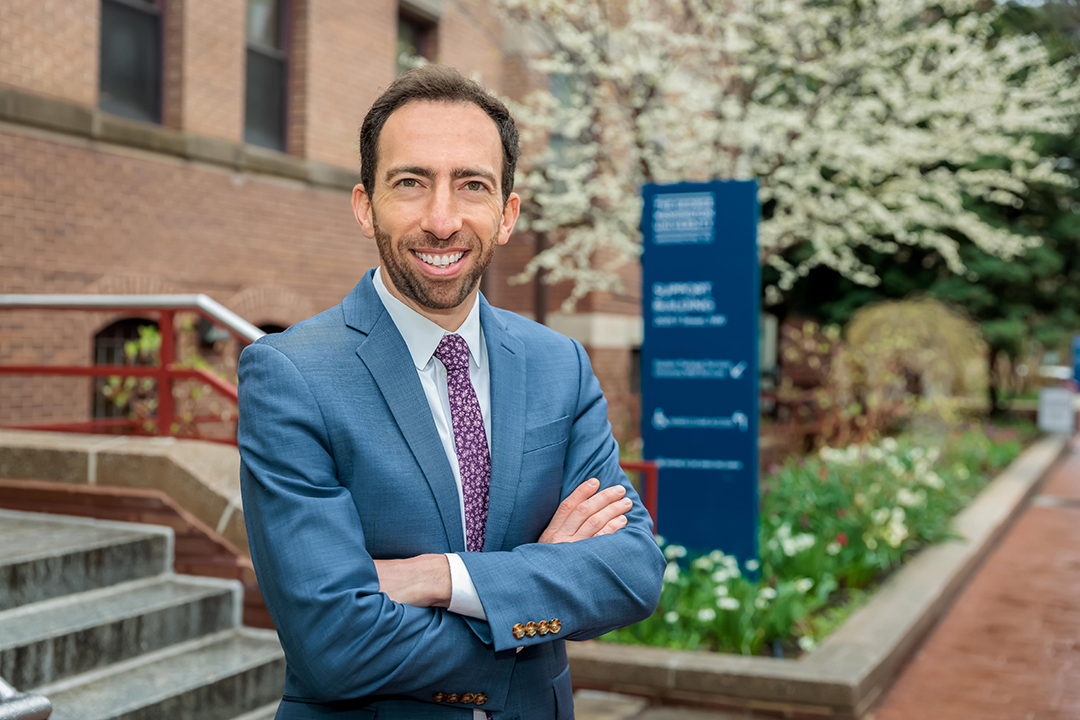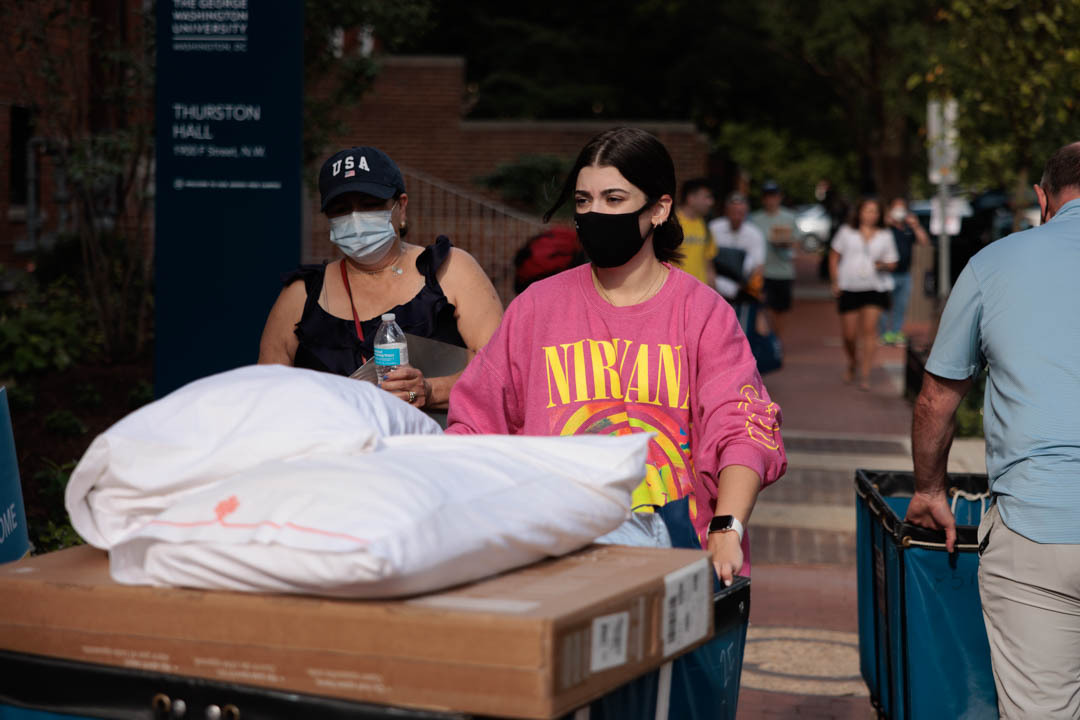When Josh Lasky, B.A. ’07, M.P.A. ’09, moved into Thurston Hall 20 years ago as a first-year student, he couldn’t have guessed that he would one day return to GW as director of the Office of Sustainability, which didn’t even exist at the time. (As a graduate student, he was a member of the presidential task force that recommended the office’s creation.)
Now that the recently renovated Thurston Hall has been awarded LEED platinum certification, Lasky might like to be a new student again.
“When I lived in Thurston, it was a much different space,” Lasky said. “I’m a little jealous that students today have such an incredible living environment to enjoy in one of the most progressively designed green buildings in the District of Columbia.”
Established by the nonprofit U.S. Green Building Council, LEED (Leadership in Energy and Environmental Design) is a widely used rating system to recognize “green” building. The platinum certification for Thurston Hall recognizes its transformation into an energy-efficient, cost-saving building with the many environmental and social benefits that entails. The residence hall reopened in August 2022 after being closed for more than two years during renovation.
To achieve LEED certification, a project earns points by adhering to environmental standards pertaining to carbon, energy, water, waste and health, among others. Projects are awarded points corresponding to various levels of LEED certification from certified (40-49 points) to silver (50-59 points), gold (60-79 points) and platinum (80+ points). Thurston Hall has been certified platinum, according to LEED version 4; a newer version 5 has just been introduced.
Thurston Hall is one of two LEED platinum buildings on campus, the other being the Milken Institute School of Public Health. The university’s focus on sustainable buildings dates back to 2007, when a commitment was made that all new buildings would meet or exceed the LEED silver standard. There are now 17 LEED-certified projects on campus (some of them interior renovations rather than entire buildings), including 12 certified gold and three certified silver.
According to Adam Aaronson, M.B.A. ’04, assistant vice president for construction management and campus planning, the LEED platinum certification for Thurston Hall is the result of a collective effort made all the more impressive by the fact that work was done to an existing building.
“Being able to achieve the energy savings while reusing an existing historic structure is certainly a challenge,” Aaronson said. “And the team really rose to the challenge. This really took the collective effort of the design team, the construction team and all of the dozens of people at GW that were involved.”
Dade Van Der Werf was the project manager for the design firm, VMDO Architects, selected by competition to design Thurston Hall’s transformation. His firm was tasked with imagining a “new” residence hall integrating certain guiding principles—facilitating community building, for example—with considerations of sustainability.
“In residence halls, one of the key things to achieve is to find ways to build and reinforce community at multiple scales so that students can have a sense of their community at the building scale, at the scale of their floor, at the scale of their hall, at the scale of their room,” Van Der Werf said.
The design solutions presented by VMDO Architects included removing portions of several floors, which were carved away to make room for a courtyard space where residents can enjoy fresh air and natural light. Community spaces were created throughout the building, including lounges, study nooks and kitchen facilities. Approximately 4,000 square feet of “green roof”—with hardy, low-maintenance plants (typically sedum, with a root system that collects water) and solar panels—bring several benefits to the renovated building.
“A green roof provides insulation,” Lasky said. “It helps to retain water in the soil in those planters, instead of contributing to more stormwater and overtaxing the sewage system. And it reduces the urban heat island effect. In cities with a lot of dark surfaces, such as asphalt and black roofs, heat from sunlight is collected and raises ambient temperatures. For people who are vulnerable to extreme heat, it just worsens things. And we can always benefit from more contact with nature. So, we get a lot of benefits from green roofs.”
Much of the existing building was reused in the renovation process, which contributed to the conservation of resources, Van Der Werf said. New products used in the building were recycled, to the extent possible, and met health requirements.
“All the systems for the building are new,” Van Der Werf said. “While the exterior still looks historic, the windows are new. It is newly insulated and the envelope is significantly improved in terms of its thermal efficiency and its airtightness. Along with the new mechanical systems, that contributes to dramatic energy savings for the project. The project uses 40% less energy than a typical residence hall. And when we include the renewable energy that GW supplies, it's about 60% more efficient than a typical residence hall.”
Apart from giving residents more community space, Lasky said, he is happy that GW students are being brought into proximity with some of the technological aspects and sustainability design elements of the renovated building. He hopes they will use their knowledge in future projects.
“This is an achievement worth celebrating,” Lasky said, “and it should be felt as a point of pride.”






